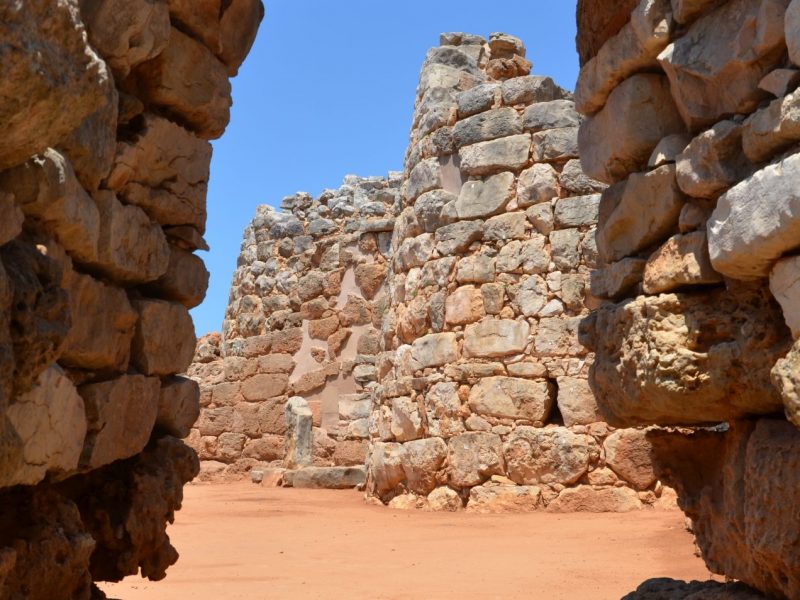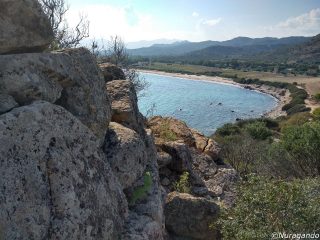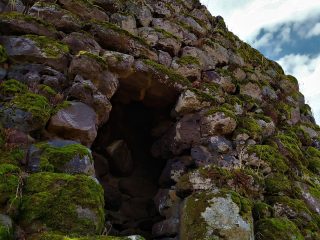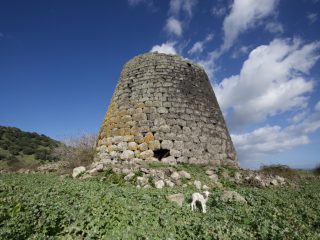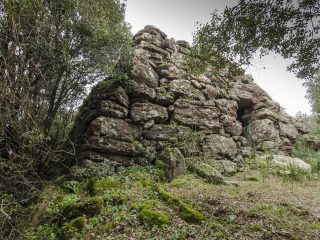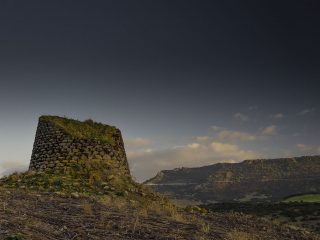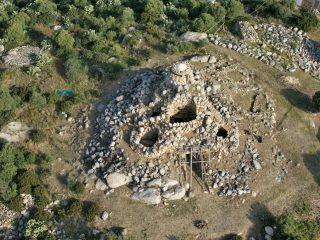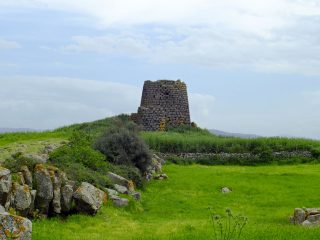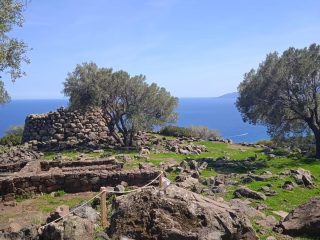Nuraghe compound arranged around two interconnecting central towers, a defence wall and a village of 50 huts, facing the original 150/200 ones.
The two towers were not built at the same time: the oldest one in limestone, with a central chamber and tholos roof dates from between the XV and the XIV centuries B.C., together with an initial group of huts; the other one, in sandstone, with collapsed vault, dates from the IX century B.C. The Meeting hut, built around the same time as the tower, with a lithic seat (running around the entire perimeter), a tank, a round armchair (perhaps used by the chief) and a sandstone model of a nuraghe tower (the original of which is housed at the Sanna Museum in Sassari). Between the IX and the VIII centuries, a wall was built with 4 hut-towers (one of which is the pre-existing Meeting Hut) and the compound is limestone coated.
The huts, mostly in a circular layout, are located outside the defence wall; they were probably houses but also enclosures for animals or storage. There were a number of findings: pottery, weapons and bronze ornaments (swords, daggers, rings, bracelets and brooches), work tools (chisels, hatchets and ice picks) and stone and bone artifacts (grinders and talismans).
The nuragic village was destroyed by a fire at the end of the VIII century even though archaeological findings show it was inhabited in the Punic and Roman eras.


